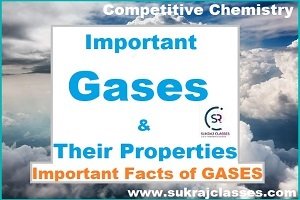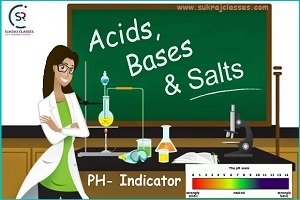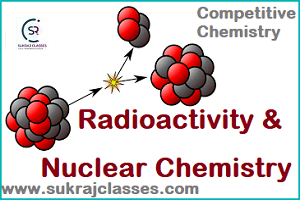
Gases and their Properties – Facts of Gases
Chemistry topic- “Gases and their Properties – Facts of Gases”, is important for all competitive exams like CET- Common eligibility Test, SSC CGL, SSC CHSL, RRB NTPC, UPSC and other state civil services exams. In these exams, almost 4-5 questions are coming from Chemistry. Let’s start the topic:
Gases and their Properties – Facts of Gases
Gas is one of the four fundamental states of matter (solid, liquid, gas and plasma).
Air is the mixture of gas such as nitrogen, oxygen etc.
The main type of gases:- 
- Hydrogen
- Helium
- Nitrogen
- Oxygen
- Carbon Dioxide
- Carbon Monoxide
- Water Vapour
- Neon
- Argon
- xenon
- Ozone
HYDROGEN:-
- Name: Hydrogen
- Symbol: H
- Atomic Number: 1
- Atomic Weight: 1.00784 u
- Group: 1
- Period: 1
- Hydrogen is the lightest (gas) chemical element on the periodic table.
- Hydrogen is colourless, odourless gas and insoluble in water
- It is less dense than air
- Hydrogen is diatomic, .
- Hydrogen is the most abundant element found in the universe.
- Hydrogen was discovered by English chemist and physicist “Henry Cavendish” in 1766.
- Hydrogen was named by French chemist “Antoine Lavoisier” in 1783.
- Hydrogen is a gas at room temperature.
- The symbol for hydrogen is H.
- Hydrogen is in the reactive non-metal element category on the periodic table.
- Hydrogen is a group 1 chemical element, which is the lithium family.
- Hydrogen is only element, whose atom does not contain “Neutron”.
- Hydrogen has three known stable isotopes: –
- Protium (1H or hydrogen-1),
- Deuterium (2H or hydrogen-2)
- Tritium (3H or hydrogen-3).
- The Sun in our Solar System produces energy by fusing hydrogen into helium.
- Source of energy in sun and stars is hydrogen by fusion process.
- Hydrogen ions commonly present in all acids.
- The strength of acid depend upon (hydrogen) ion concentration.
- The mass of the Sun in our Solar System is about 73% hydrogen.
Use of Hydrogen Gas:-
- Hydrogen is used in power stations to cool generators as a popular coolant.
- Tritium is used in thermonuclear weapons, also known as hydrogen bombs or H bombs.
- Hydrogen has highest calorific value. Hence, it is use as a propellant (Rocket fuel).
- Hydrogen gas use in the process of hydrogenation through which ordinary oil can be converted into vegetable ghee (Dalda ghee).
- It is an alternative to hydrocarbon fuels.
Gases and their Properties – Facts of Gases
HELIUM :-
- Name: Helium
- Symbol: He
- Atomic Number: 2
- Atomic Weight: 4.002602 u
- Group: 18
- Period: 1
- Helium is a gas at room temperature.
- Helium is a non-toxic gas that is odourless, tasteless and colorless.
- Helium is named after Helios, the Greek Titan of the Sun.
- Helium is the 2nd lightest element on the periodic table and Lightest among all the inert gases.
- Helium is the 2nd most abundant element found in the universe, but it considered rare on Earth.
- While helium is abundant throughout the universe, Most of the helium found on Earth was formed from radioactive decay.
- Helium is in the noble gas group (18) on the periodic table.
- Helium has two stable isotopes: helium-3 (3H) and helium-4 (4H).
- Helium is filled in aeroplane’s tyres due to its non- combustion nature.
- Helium is filled in the oxygen cylinder of scuba-driver.
- Helium is also filled in oxygen-cylinder of asthmatic patients.
Fact: – General oxygen cylinders which use in hospitals etc. Nitrogen gas is mixed with Oxygen (pure oxygen can blast, in human body).
Use of Helium gas:-
- Helium gas used in tourist balloons, because helium is lighter than air, it can give things lift
- Helium dating is a processed used to determine the age of rocks and materials.
- It is used in cryogenic applications.
Gases and their Properties – Facts of Gases
OXYGEN:-
- Name: Oxygen
- Symbol: O
- Atomic Number: 8
- Atomic Weight: 15.999 u
- Group: 16
- Period: 2
- Oxygen is a gas at room temperature.
- Oxygen is odourless, tasteless and colourless.
- Oxygen was discovered in 1771, by Swedish pharmacist “Carl Wilhelm Scheele”.
- Oxygen was named in 1777, by French chemist “Antoine Lavoisier”.
- It is denser than air.
- The symbol for oxygen is O.
- Exists as two oxygen atoms bonded together – diatomic O2
- Oxygen is in the reactive non-metal element category on the periodic table.
- Oxygen is a group 16 chemical element, which is the chalcogen group.
- Oxygen has three stable isotopes: – 16O, 17O and 18
- Oxygen is the 3rd most abundant element found in the universe.
- Oxygen is most abundant element present in our “earth-crust”.
- The most abundant element present in human body is oxygen.
- The Earth’s atmosphere consists of 21% oxygen.
- Most living organisms on Earth need to breathe oxygen to live.
- Oxygen is soluble in water. Hence, aquatic life is possible.
- With decrease in temperature, the dissolvity of gases increases in water. It is the reason that after freezing of lake, aquatic life can survive inside it.
- Water is made up of two-part hydrogen and one-part oxygen.
- Plants produce oxygen through a process known as photosynthesis.
- Ozone is an allotropic form of oxygen which form a layer in atmosphere, which absorb U.V. rays.
- Ozone is use in the sterilization process.
Use of Oxygen:
- Oxygen is used in medicine to treat people with respiratory and heart issues.
- Oxygen has industrial purposes and is used in the steel making process.
- Oxygen is used in space travel, underwater diving and submarines.
- In welding, acetylene gas is mixed with oxygen to increase the burn temperature to about 3000 degrees Celsius. Oxyacetylene welding is used to cut and weld steel.
Gases and their Properties – Facts of Gases
CARBON – DIOXIDE :-
- Name: Carbon dioxide.
- Formula: CO2
- Molar mass: 44.01 g/mol
- Carbon dioxide is colourless gas.
- At low concentrations the gas is odorless; however, at sufficiently-high concentrations, it has a sharp, acidic odor.
- Carbon dioxide is denser than air.
- It is soluble in water.
- Carbon dioxide gas is the main responsible gas for global warming.
- Plants require carbon dioxide to conduct photosynthesis. CO2to sustain and increase the rate of plant growth.
- Co (carbon-mono-oxide) has higher affinity with hemoglobin. Due to this they form carboxy-hemoglobin which is a toxic substance and causing death. (It is the reason in a close room coal fire does not kept and slept).
- Solid CO2 is known as dry ice.
- CO2 is used as fire extinguisher.
- The Earth’s atmosphere consists of 0.03% – 0.04% carbon dioxide
- CO2 gas is main responsible gas for air pollution which exhausted from automobiles industries chimneys and volcano etc.
- On heating of sodium bi-carbonate (NaHC ) (backing soda) it produce CO2 It is the reason that sodium bicarbonate use in bakery industries which makes bakery/bread bloated.
Note: – to remove bitterness of sodium bi-carbonate, tartaric acid is used with sodium bi-carbonate which called baking powder.
Use of Carbon-Dioxide:-
- Carbon dioxide use in many food and beverages industry from carbonating drinks and conserving wine to modifying atmospheres for packaged foods.
- Dry ice or solid CO2 is commonly used for storage and transportation of temperature sensitive products such as frozen chilled foods or medical pharmaceutical materials.
- Dry ice is used as a process coolant in food, chemicals, research and pharmaceutical industries
- In agriculture, CO2 can be used to enhance growth in greenhouses.
Gases and their Properties – Facts of Gases
NITROGEN:-
- Name: Nitrogen
- Symbol: N
- Atomic Number: 7
- Atomic Weight: 14.0067 u
- Group: 15
- Period: 2
- Nitrogen is a gas that is Colourless, Odourless and Tasteless
- It is insoluble in water.
- Nitrogen was discovered by Scottish physician “Daniel Rutherford” in 1772.
- Nitrogen was named by French chemist “Jean-Antoine Chaptal” in 1794.
- Nitrogen is in the reactive non-metal group on the periodic table.
- Nitrogen is a group 15 chemical element, which is the nitrogen group.
- Nitrogen has two stable isotopes: – 14N and 15N.
- Nitrogen is the seventh most abundant element found in our Solar System and the Milky Way galaxy.
- Dinitrogen (N2) is most abundantly present around 78% of the Earth’s atmosphere (in third layer).
- If there is no nitrogen in our atmosphere, our earth became to ash.
- Nitrogen gas provides an inert atmosphere on the earth.
- At the time of thundering, atmospheric nitrogen converted into nitrate, which improve the fertility of soil.
- Nitrogen is the fourth most abundant element found in the human body.
- The human body is made up of about 3% nitrogen by mass.
- Nitrogen is present in all living organisms.
- The compound nitroglycerin, also called nitro, is a contact explosive that is one of the planets most powerful explosives.
- The compound Nitrous oxide, also called nitrous or laughing gas, is used as anaesthesia by medical professionals.
- Titan is a moon of Saturn that has a dense atmosphere made up of about 97% nitrogen.
- Nitrogen + Argon are filled in electric blub.
Use of Nitrogen Gas:-
- Liquid nitrogen is very cold and makes a good coolant
- Liquid nitrogen is use in preservation of human body organ and animal Siemens for artificial breeding.
- Nitrogen is used to flash freeze foods and help retain their flavour, texture and moisture.
- Nitrogen is a popular refrigerant used to store organic material, like the eggs from an ovary of a human female.
- Nitrogen gas provides an inert atmosphere in food packaging, helping to keep the contents fresh for a long time.
Gases and their Properties – Facts of Gases
AMMONIA:-
- Name: Ammonia
- Formula – N
- Ammonia (N is a colourless,
- Ammonia has a pungent smell.
- Ammonia gas is composed of nitrogen and hydrogen.
- This is an inorganic compound.
- It is the simplest stable compound of these elements.
- It is soluble in water and less dense in air.
Uses of Ammonia:-
- It is used in textile industries to manufacture of synthetic fibres, such as nylon and rayon.
- In the dyeing of cotton, wool, and silk.
- Ammonia serves as a catalyst in the production of some synthetic resins.
- It neutralizes acidic by-products of petroleum refining.
- In the rubber industry it prevents the coagulation of raw latex during transportation from plantation to factory.
- It is used as a fuel for rocket engines
- Ammonia is also use in the process a method for converting ammonia into nitric acid.
- Ammonia is used in various metallurgical processes.
- It is used as a pH adjuster in the fermentation process
- Ammonia useful as a coolant in refrigeration and air conditioning equipment. It can absorb substantial amounts of heat from its surroundings (i.e., one gram of ammonia absorbs 327 calories of heat).
- It is used in the household as a cleaner (NH3 is mixed with water to clean stainless steel and glass).
- Ammonia is used as a fertilizer as it increases the yield of crops.
- It is used in food products as an antimicrobial agent.
Gases and their Properties – Facts of Gases
FLUORINE:-
- Name: Fluorine
- Symbol: F
- Atomic Number: 9
- Atomic Weight: 998403 u
- Group: 17 (halogen group)
- Period: 2
- Fluorine is a gas at room temperature.
- Fluorine is a highly toxic and corrosive gas.
- Fluorine in its gas state is a pale yellow color and in a liquid state it has bright yellow colour.
- Fluorine was discovered in 1810 by French physicist and mathematician André-Marie Ampère.
- “Cornish” named to fluorine gas.
- Fluorine is in the reactive non-metal element category on the periodic table.
- Fluorine is a group 17 chemical element, which is the halogen group.
- Fluorine’s one stable isotope is 19F.
- The composition of the Earth’s crust contains 0.0585% fluorine.
- Fluorine isn’t found in its pure form on Earth, it obtained from minerals that contain fluorine.
- Fluorine is the most reactive chemical element on the periodic table of elements
- Fluorine is the most electronegative chemical element on the periodic table of elements.
- Fluorine is the lightest element in the halogen group on the periodic table of elements.
- Hydrogen fluoride (HO) and hydrofluoric acid (HF) are the only two sources for creating fluorine compounds.
- Fluoride is a compound that contains fluorine.
- Sodium Fluoride (NaF), a compound that contains fluorine, is added to toothpaste and drinking water to help prevent dental cavities and tooth decay in humans.
Use of Fluorine:-
- Fluorine is used in many fluoro-chemicals, including solvents and high-temperature plastics, such as Teflon.
- Fluorides, have been used in welding and for frosting glass.
- Sulfur hexafluoride is a gas used to insulate high-power electricity transformers.
- Fluoride is also used for dental health.
Gases and their Properties – Facts of Gases
NEON: –
- Name: Neon
- Symbol: Ne
- Atomic Number: 10
- Atomic Weight: 20.179 u
- Group: 18
- Period: 2
- Neon is a gas at room temperature.
- Neon is a colorless and odourless gas.
- Neon is in the noble gas element category on the periodic table.
- “William Ramsay and Morris” first isolated and discovered to neon in 1898.
- Neon has three stable isotopes and they are 20Ne, 21Ne and 22Ne.
- Neon is the 5th most abundant element found in the universe.
- A trace amounts of neon is present in the Earth’s atmosphere.
- Neon is about two-thirds denser than air.
- Neon is second lightest noble gases, only helium is lighter than neon.
Use of Neon gas:-
- Neon can be liquefied and used as a cryogenic refrigerant.
- It is used for manufacturing high-voltage indicators, television tubes, wave meter tubes switching gear, lightning arresters, diving equipment
- The reddish-orange color emitted from the neon lights are used for advertising purposes
- It is combined with helium to produce helium-neon lasers.
Gases and their Properties – Facts of Gases
ARGON:-
- Name: Argon
- Symbol: Ar
- Atomic Number: 18
- Atomic Weight: 39.948 u
- Group: 18
- Period: 3
- Argon is a gas at room temperature.
- Argon is a colorless, odourless, and tasteless gas.
- Argon is a group 18 (noble gases group) chemical element. So, argon is noble gas.
- British scientist John W. Strutt and Scottish chemist William Ramsay discovered and isolated to argon.
- Argon has three stable isotopes: 36Ar, 38Ar and 40Ar.
- Over 99% of the natural argon found on Earth is 40Ar.
- Argon is the 3rd most abundant gas found in the Earth’s atmosphere.
- Argon is denser than air.
- Argon’s density makes it a great insulator and is injected in between double pan windows.
- Argon is added into incandescent light bulbs to protect the filament from oxidation.
Use of Argon:-
- A mixture of argon and nitrogen is used in an electric bulb
- Argon lasers are used in the treatment of retinal detachment and retinal phototherapy for those who are diabetic
- It is also used in surgeries to weld arteries and destroy tumours.
- In the medical field, it is mainly use in argon laser system, as it is capable of targeting areas with extreme precision.
Gases and their Properties – Facts of Gases
XENON:-
- Name: Xenon
- Symbol: Xe
- Atomic Number: 54
- Atomic Weight:293 u
- Group: 18 (noble gases)
- Period: 5
- Xenon is a gas at room temperature.
- Xenon is a dense noble gas
- Xenon is odourless and colorless. However, it does exhibit bright blue glow when placed inside an electric field.
- Scottish chemist William Ramsay and English chemist Morris Travers discovered and first isolated to xenon.
- Xenon is in the noble gas element category on the periodic table.
- Xenon is a group 18 chemical element, which is the noble gases group.
- Xenon has Isotopes 124Xe, 126Xe, 128Xe, 129Xe, 130Xe, 131Xe, 132Xe, 134Xe and 136
- Xenon is found in the Earth’s atmosphere at trace amount about 1 part per 11.5 million.
- Xenon has been detected in gases emitted from some mineral springs.
Use of Xenon: –
- Xenon is used in medicine as a general anesthetic and in medical imaging.
- It is used in Flash lamps called Xenon flash-lamps.
- It is also used in photographic flashes.
- It is used to measure the flow of blood and also used to image the Brain, Heart, and Lungs.
- Also, the element is used in NMR spectroscopy
- Xenon is also used in high pressure arc lamps for motion picture projection, and in high pressure arc lamps to produce ultraviolet light.
For More:
If you like and think that General Science (Chemistry) topic on “Gases and their Properties – Facts of Gases” was helpful for you, Please comment us. Your comments/suggestions would be greatly appreciated. Thank you to be here. Regards – Team SukRaj Classes.





